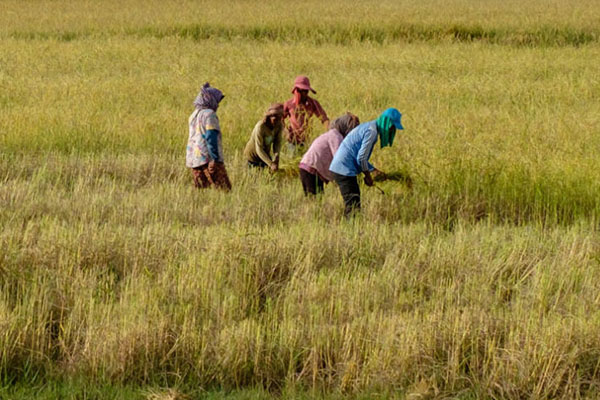
Learning from Neighbors
Villagers in Cambodia inspired to improve sanitation after field trip
Representatives of three Cambodian villages recently came away determined to improve their local sanitation after visiting a nearby community that had successfully addressed similar problems.
Many of the villagers are part of a working group formed in October to address inadequate access to safe water supply and sanitation (WASH) in central Cambodia’s Stung Chinit watershed. With the help of the USAID-funded Sustainable Water Project (SWP), the working group produced a plan to raise public awareness of water issues, and prepared tangible initiatives to directly affect three target villages in the watershed.
To better inform those efforts, SWP Cambodia and the Kampong Thom Provincial Department of Rural Development organized a field trip in November for representatives of the three target villages and other stakeholders to the nearby Chey Commune. (A commune is an administrative division of the Cambodian government containing multiple villages.)
Three years ago, the commune set a goal to qualify itself as open defecation-free (ODF), a term used to describe communities where 100 percent of residents have shifted to using a toilet. The community achieved that goal in October.
Open defecation – instead of in a latrine or toilet – remains common in rural areas of Cambodia. Nearly one-third of Cambodians engage in the practice, typically in surrounding fields and bushes. It is the result of several factors, including cultural practices and lack of access to safe sanitation facilities.
But progress is being made – since 2015 the percentage of the population engaging in the practice has declined from 40 to 27 percent – and it’s happening in places like the Chey Commune.
So Ham, 61, a community representative from Beung Commune, admitted that before the field trip, she didn’t know what an ODF commune looked like and thought, “maybe it’s impossible to do that.” But touring the area, she came away impressed and inspired to enact similar change in her own community.
“It made my mind completely change from impossible to possible,” she said. “I can make my village a clean village, too. Why not?”
Another visitor, Chhit Khoeurn, 64, is the commune chief of Beung Lavea, which recently received subsidized latrine materials from the Kampong Thom Provincial Department of Rural Development. In his commune, “it is difficult to push people to build latrines,” Khoeurn said, “even [though] they received free latrine materials.”
Currently, most people in Khoeurn’s community prefer to delay building a latrine until they save enough money to build a “cement room,” the physical infrastructure that protects the latrine. But the field trip changed his thought process, particularly when members of the commune team and village committee told him that they had previously had the same problems.
“After visiting ODF commune, I have seen a lot of households that built simple latrine and shelter [and] it looks clean, so why not in my commune?” he said. “It gives me hopes to improve sanitation in my commune. Let’s try all together to make our village clean and everyone have access to latrine.”
Related Projects

